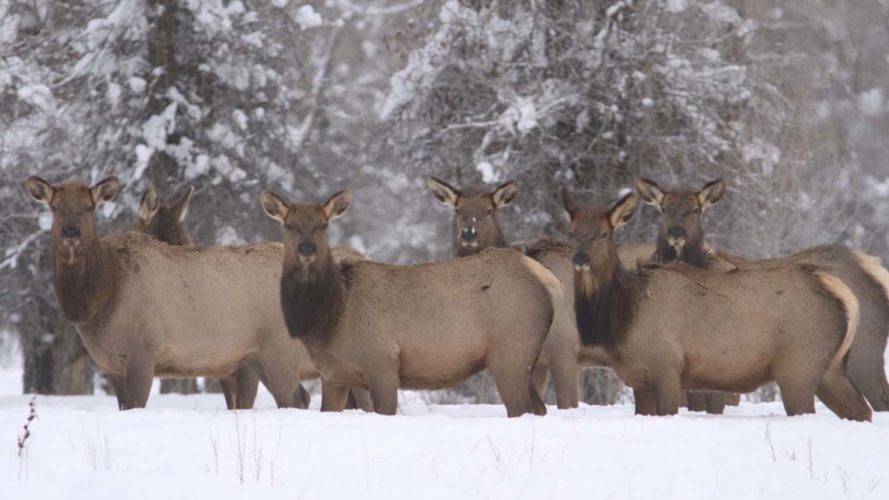News
Wyoming G&F to Implement Emergency Feeding of Elk in the Northern Bighorn Mountains Due to Fire Impacts

The Wyoming Game and Fish Department will implement emergency feeding of elk in the northern Bighorn Mountains in response to late-season, winter range impacts from the Elk Fire. The feeding operation will be short term and only in targeted areas. The Elk Fire burned almost 100,000 acres of the eastern flank of the Bighorns during late September and October, including on the Amsden Creek and Kerns wildlife habitat management areas (WHMAs). Approximately 85 percent of Amsden Creek and 65 percent of Kerns were burned.
Emergency feeding of elk will take place on these properties to provide supplemental forage to reduce movement of elk onto adjoining private agricultural lands. Weather conditions and elk distribution will dictate when and where feeding starts. Feeding will only take place during the winter of 2024-2025 and not extend into future years.
Mule deer are not targeted for emergency feeding. Mule deer have a specialized digestive system that does not process hay as efficiently as elk and it can have detrimental impacts on their health. Additionally, GPS data from the ongoing North Bighorns Mule Deer Monitoring Project show that while there are some resident mule deer on the eastern Bighorns, many mule deer that summer in the Bighorns move to the west side of the mountains during winter.
Mule deer that do winter on the east side of the Bighorns tend to winter further out on the foothills and plains, which were not impacted by the fire. Short-term emergency feeding of elk has taken place in recent years in other parts of Wyoming, including most recently in the winter of 2022-2023 in the western part of the state in response to unusually high amounts of snow cover.


Diane Davis
November 16, 2024 at 9:44 am
Very good to hear.
Linda Pruett
November 16, 2024 at 3:53 pm
Thank you. This is greatly needed assistance this year.